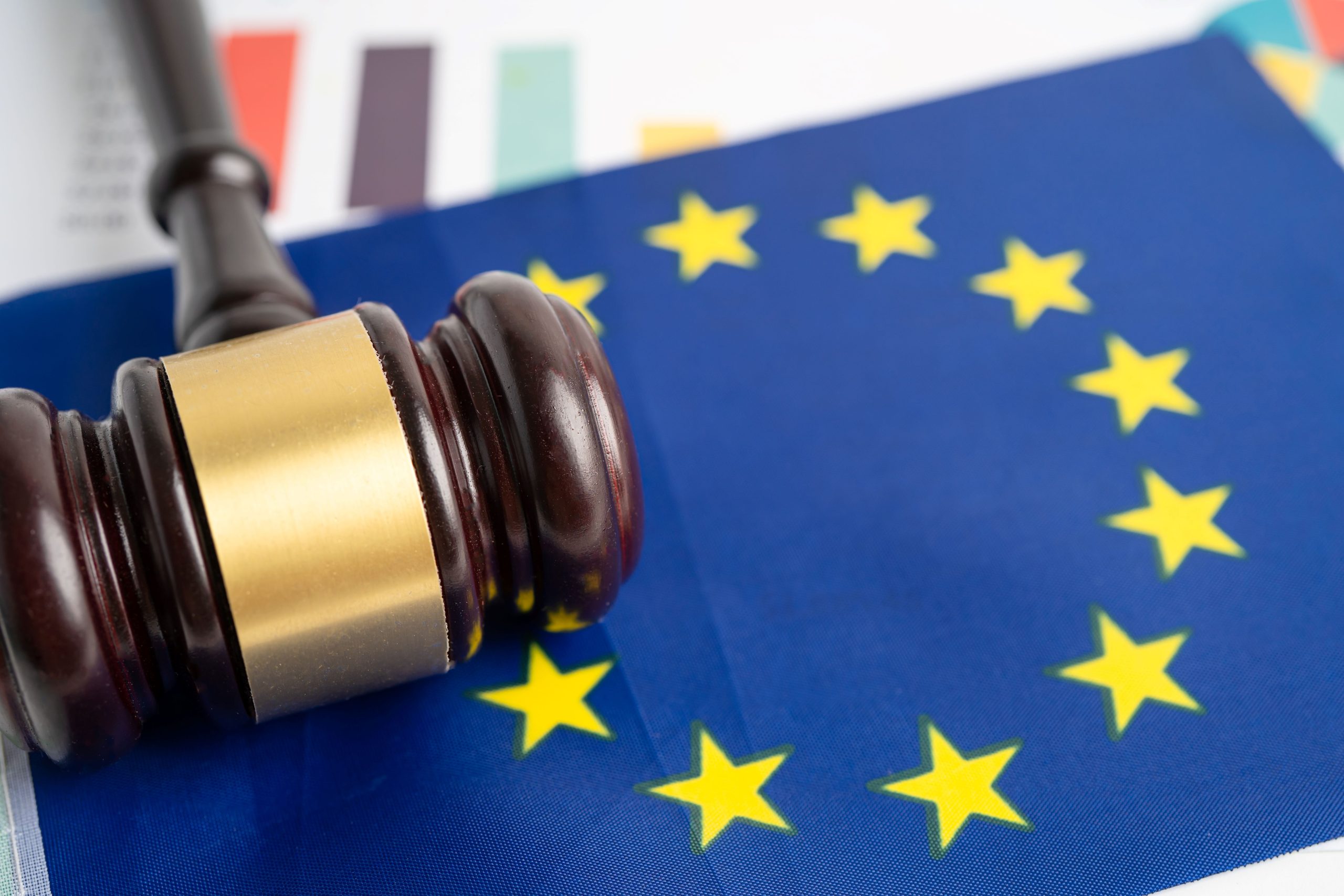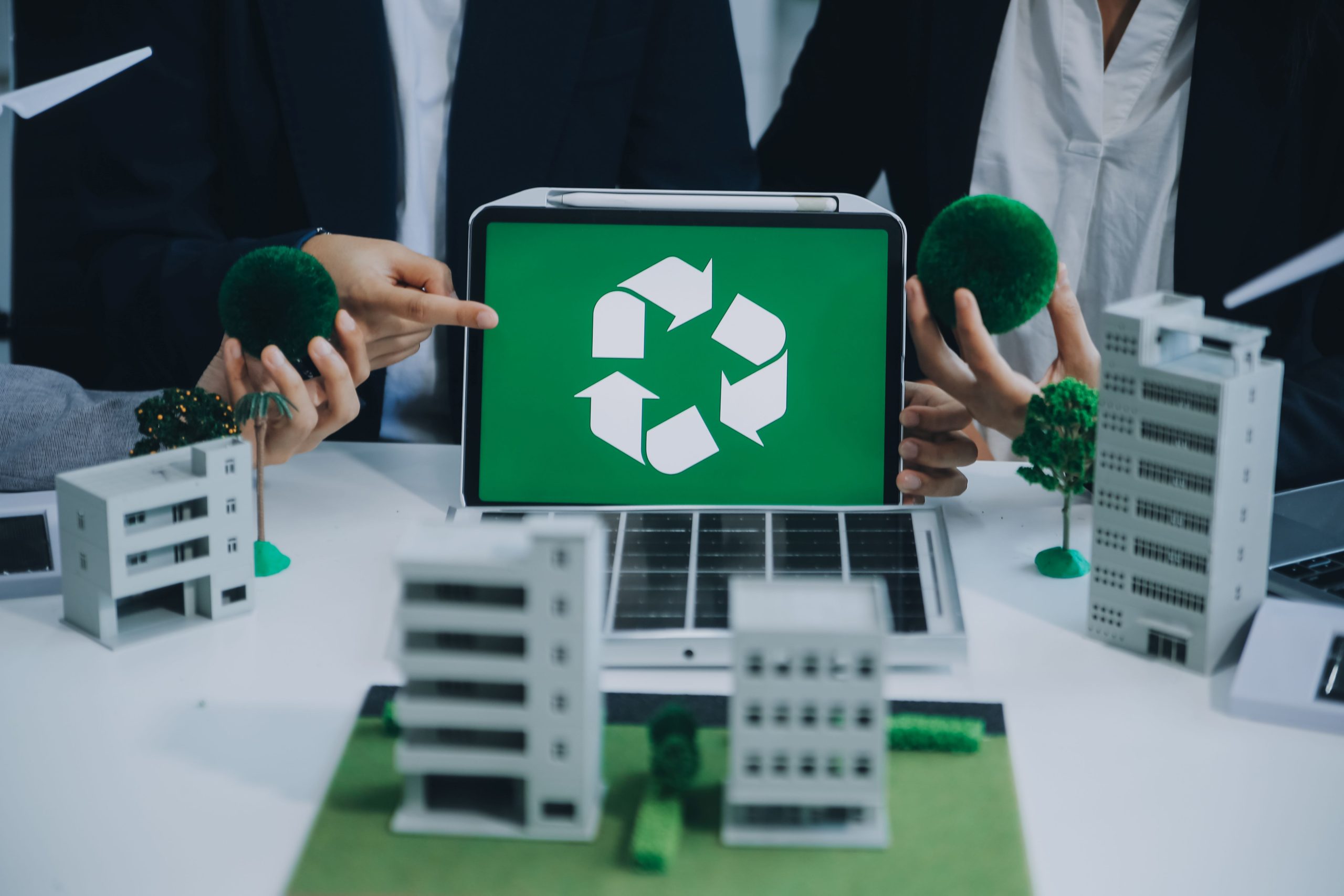By 2050, the global demand for resources will triple, putting immense pressure on our planet. In Europe alone, we are using 1.6 times the resources that our ecosystems can regenerate each year, leading to an urgent need for sustainable practices.
The pressing issue of sustainability has reached a critical juncture worldwide, driven by the looming threat of climate change, resource depletion, and environmental degradation.
In Europe, this urgency is further amplified by a strong societal commitment to environmental stewardship and stringent regulatory frameworks aimed at curbing ecological footprints.
With the European Union spearheading ambitious goals through initiatives like the European Green Deal, sustainability is not just a buzzword but a fundamental shift in how businesses operate.
As sustainability becomes increasingly pivotal in the European market, businesses must adapt by integrating green initiatives into their operations.
This article explores the importance of sustainability in Europe, the regulatory landscape shaping business practices, and practical steps for companies to implement effective and innovative green strategies.
By doing so, businesses can not only comply with regulations but also gain a competitive edge, enhance their reputation, and contribute to a more sustainable future.
The Imperative of Sustainability

Historical Perspective: Evolution of the Sustainability Movement in Europe
The sustainability movement in Europe has deep roots, tracing back to the early environmental awareness of the 1960s and 1970s.
Influential events, such as the publication of “The Limits to Growth” by the Club of Rome in 1972 and the first Earth Summit in 1992, galvanized public and governmental support for environmental protection.
The European Union has played a pivotal role in advancing sustainability, with landmark policies such as the 1992 Maastricht Treaty incorporating environmental considerations into its legislation and the 2000 Lisbon Strategy aiming for sustainable economic growth.
Over the decades, Europe has steadily progressed from reactive pollution control to proactive sustainability measures, positioning itself as a global leader in the green transition.
Current Climate: Environmental Challenges in Europe
Today, Europe faces significant environmental challenges that underscore the need for urgent and sustained action.
Climate change poses a severe threat, with rising temperatures, increased frequency of extreme weather events, and shifting climate patterns affecting ecosystems, agriculture, and human health.
Pollution remains a critical issue, with air and water quality deteriorating due to industrial activities, urbanization, and transportation emissions.
Additionally, resource depletion, characterized by the overexploitation of natural resources such as forests, minerals, and fisheries, strains Europe’s ecological balance and jeopardizes future economic stability.
These challenges highlight the imperative for comprehensive and integrated sustainability strategies across all sectors of society.
Market Demand: Consumer Trends Towards Sustainability
Consumer behavior in Europe is increasingly driven by sustainability considerations, reflecting a growing awareness of environmental issues and a preference for eco-friendly products and services.
Surveys indicate that a significant portion of European consumers are willing to pay a premium for sustainable goods, prioritize companies with strong environmental credentials, and are more likely to trust brands that demonstrate a commitment to sustainability.
This shift is evident in the rise of organic and locally sourced foods, the popularity of sustainable fashion, and the growing demand for renewable energy solutions.
Businesses that respond to these trends by incorporating sustainability into their core operations can not only meet consumer expectations but also differentiate themselves in a competitive marketplace.
The Regulatory Landscape

EU Regulations: Promoting Sustainability Across Europe
The European Union has established a comprehensive regulatory framework to promote sustainability, with the European Green Deal at the forefront. Announced in 2019, the Green Deal aims to make Europe the first climate-neutral continent by 2050. Key components include:
- Climate Law: Legally binding targets to cut greenhouse gas emissions by at least 55% by 2030 compared to 1990 levels.
- Circular Economy Action Plan: Measures to reduce waste, encourage recycling, and promote sustainable product design.
- Biodiversity Strategy: Efforts to protect and restore ecosystems, ensuring that 30% of Europe’s land and sea areas are protected by 2030.
- Farm to Fork Strategy: Initiatives to create a fair, healthy, and environmentally friendly food system.
- Sustainable Finance: The Taxonomy Regulation, establishes a classification system for environmentally sustainable economic activities to guide investment decisions.
National Policies: Implementing EU Regulations
Different European countries have developed national strategies to align with and enforce EU sustainability regulations, demonstrating a variety of approaches:
- Germany: Through its Climate Action Plan 2050, Germany has committed to reducing greenhouse gas emissions by 80-95% by 2050. The country has also implemented strict recycling laws and significant investments in renewable energy.
- Sweden: Known for its progressive environmental policies, Sweden aims to achieve net-zero emissions by 2045. It has implemented carbon pricing and extensive subsidies for green technology.
- France: France’s Energy Transition for Green Growth Act targets a 40% reduction in fossil fuel consumption by 2030 and promotes the use of renewable energy sources. The country also has strict regulations on single-use plastics.
- Denmark: Denmark is focused on becoming a global leader in wind energy and aims for a 70% reduction in greenhouse gas emissions by 2030. The country has also committed to a circular economy strategy.
Impact on Businesses: Navigating the Regulatory Landscape
The extensive regulatory framework affects businesses across Europe in several ways:
- Compliance Costs and Benefits: While meeting regulatory requirements can involve significant upfront costs, such as investments in new technologies and processes, it also offers long-term benefits. These include operational efficiencies, lower energy costs, and eligibility for government incentives.
- Innovation and Competitiveness: Regulations drive innovation by encouraging businesses to develop sustainable products and services. Companies that adapt quickly can gain a competitive edge, access new markets, and attract eco-conscious consumers.
- Risk Management: Compliance with regulations helps businesses mitigate risks associated with environmental liabilities and potential legal penalties. It also enhances resilience against market volatility and regulatory changes.
- Reputation and Trust: Demonstrating compliance with sustainability regulations can improve a company’s reputation, build consumer trust, and foster loyalty. It signals a commitment to ethical practices and environmental stewardship.
Benefits of Adopting Sustainable Practices

Economic Advantages
Adopting sustainable practices offers significant economic benefits for businesses, primarily through cost savings and efficiency gains:
- Energy Efficiency: Implementing energy-efficient technologies and practices can substantially reduce operational costs. For example, using LED lighting, energy-efficient HVAC systems, and renewable energy sources like solar or wind power can lower energy bills. Energy audits can help identify areas where businesses can cut consumption and save money.
- Waste Reduction: Reducing waste generation and improving waste management can lead to significant cost savings. Practices such as recycling, reusing materials, and optimizing production processes to minimize waste can reduce disposal costs and generate revenue from selling recyclable materials. The circular economy model, which focuses on keeping resources in use for as long as possible, can create additional economic value.
- Sustainable Supply Chains: Developing sustainable supply chains can lower costs and enhance resilience. By sourcing materials from environmentally responsible suppliers and optimizing logistics to reduce carbon emissions, companies can achieve cost efficiencies. Sustainable supply chains can also protect businesses from supply disruptions and price volatility associated with resource scarcity.
Brand Loyalty and Reputation
Sustainability can significantly enhance a company’s brand image and foster customer loyalty:
- Enhanced Image: Companies that prioritize sustainability are often viewed more favorably by consumers. This positive perception can strengthen brand reputation and differentiate the company from competitors. Being recognized as a sustainable business can attract media attention and industry accolades, further boosting the company’s public image.
- Customer Loyalty: Modern consumers, particularly younger generations, increasingly prefer to engage with and purchase from brands that align with their values, including environmental responsibility. Demonstrating a commitment to sustainability can build strong, loyal customer relationships. Eco-conscious consumers are likely to remain loyal to brands that they believe are contributing to environmental protection and social good.
- Employee Morale and Retention: Sustainability initiatives can also enhance employee satisfaction and retention. Employees are more likely to feel proud and motivated working for a company that values environmental and social responsibility, leading to higher productivity and reduced turnover rates.
Innovation and Competitiveness
Sustainability drives innovation and keeps businesses competitive in a rapidly evolving market:
- Innovation Opportunities: Pursuing sustainability often requires companies to innovate and develop new products, services, and business models. This can lead to the creation of unique, market-leading offerings. For example, developing eco-friendly products, such as biodegradable packaging or energy-efficient appliances, can open new revenue streams and attract environmentally conscious consumers.
- Staying Ahead of Regulations: By proactively adopting sustainable practices, businesses can stay ahead of regulatory changes and avoid the costs and disruptions associated with compliance. Early adoption of green technologies and practices can position companies as industry leaders and set standards for competitors to follow.
- Market Differentiation: Sustainability can serve as a key differentiator in a crowded marketplace. Companies that commit to sustainability can create a strong unique selling proposition (USP), appealing to both consumers and business partners looking for responsible and forward-thinking collaborators.
- Long-Term Viability: Sustainable practices contribute to the long-term viability and resilience of businesses by mitigating risks related to resource scarcity, environmental regulations, and shifting market demands. Companies that invest in sustainability today are better prepared for the challenges of tomorrow, ensuring their continued success and growth.
Implementing Green Initiatives: A Roadmap for Businesses

Assessment and Strategy
To effectively implement green initiatives, businesses must begin with a thorough assessment and strategic planning:
- Conduct a Sustainability Audit: Evaluate current practices to identify areas of improvement. This includes analyzing energy usage, waste generation, resource consumption, and supply chain practices.
- Set Clear Goals: Define specific, measurable, achievable, relevant, and time-bound (SMART) sustainability goals. These could include reducing carbon emissions, achieving zero waste, or sourcing 100% renewable energy.
- Develop a Sustainability Strategy: Create a comprehensive plan outlining the steps to achieve the set goals. This strategy should align with the company’s overall mission and values and include timelines, responsible teams, and key performance indicators (KPIs).
- Engage Stakeholders: Involve employees, customers, suppliers, and investors in the sustainability journey. Communicate the goals and benefits of the sustainability initiatives and seek their support and collaboration.
- Monitor and Report Progress: Establish a system for tracking progress against goals. Regularly report on sustainability achievements and challenges, and adjust strategies as needed.
Energy Efficiency
Reducing energy consumption and transitioning to renewable energy sources are crucial steps in implementing green initiatives:
- Energy Audits: Perform energy audits to identify inefficiencies and areas for improvement. Look for opportunities to upgrade lighting, heating, cooling, and machinery to more energy-efficient models.
- Renewable Energy: Transition to renewable energy sources such as solar, wind, or biomass. Installing solar panels, purchasing green energy from suppliers, or investing in renewable energy projects can significantly reduce carbon footprints.
- Smart Technology: Implement smart building technologies that optimize energy use, such as automated lighting and temperature controls, and energy management systems that monitor and adjust energy consumption in real-time.
- Employee Engagement: Encourage energy-saving practices among employees, such as turning off lights and equipment when not in use, and implementing energy-efficient habits in daily operations.
Waste Management
Effective waste management strategies can help businesses reduce waste and promote recycling and circular economy practices:
- Reduce, Reuse, Recycle: Adopt the three Rs to minimize waste. Reduce waste generation through better design and production processes, reuse materials wherever possible, and establish robust recycling programs.
- Circular Economy: Embrace the circular economy model by designing products for longevity, repairability, and recyclability. Collaborate with other businesses to repurpose waste materials into new products.
- Composting and Organic Waste: Implement composting programs for organic waste, turning food scraps and other biodegradable materials into valuable compost for landscaping or agricultural use.
- Waste Audits: Conduct waste audits to identify the types and quantities of waste generated. Use this data to develop targeted waste reduction strategies and track progress.
Sustainable Supply Chains
Ensuring suppliers adhere to sustainable practices is essential for a comprehensive sustainability strategy:
- Supplier Assessment: Evaluate suppliers based on their environmental and social practices. Use sustainability criteria when selecting and contracting suppliers.
- Code of Conduct: Develop a supplier code of conduct that outlines expectations for environmental performance, labor practices, and ethical behavior. Require suppliers to adhere to these standards.
- Audits and Monitoring: Conduct regular audits of suppliers to ensure compliance with sustainability standards. Use third-party certification and monitoring to verify supplier practices.
- Collaboration: Work closely with suppliers to improve their sustainability practices. Provide support and resources to help them achieve their sustainability goals, and collaborate on initiatives that benefit both parties.
- Transparent Communication: Maintain open and transparent communication with suppliers about sustainability expectations and performance. Share successes and challenges to foster a collaborative approach to sustainability.
Case Studies of Success

Small and Medium Enterprises (SMEs)
- Ecoalf (Spain): Ecoalf, a Spanish SME, has revolutionized the fashion industry with its commitment to sustainability. The company produces clothing and accessories from recycled materials, including plastic bottles, fishing nets, and used tires. By innovating in textile recycling and creating high-quality, stylish products, Ecoalf has significantly reduced waste and promoted circular economy principles. Their success demonstrates that sustainability can be both environmentally beneficial and commercially viable.
- Belu Water (UK): Belu Water, a UK-based SME, has made a name for itself by providing carbon-neutral bottled water. The company uses recycled plastic bottles and offsets its carbon footprint by investing in renewable energy projects. Belu also donates 100% of its profits to WaterAid, a charity that provides clean water and sanitation to communities in need. This approach has earned Belu a loyal customer base and recognition as a leader in ethical business practices.
Large Corporations
- IKEA (Sweden): IKEA has set ambitious sustainability goals, including becoming climate positive by 2030. The company has invested heavily in renewable energy, aiming to produce more energy than it consumes through wind farms and solar panels. IKEA also focuses on sustainable sourcing, ensuring that all wood and cotton come from sustainable sources, and promotes a circular economy by encouraging customers to return and recycle old furniture. These initiatives not only enhance IKEA’s environmental performance but also appeal to eco-conscious consumers.
- Unilever (Netherlands/UK): Unilever is a global leader in sustainability, with its Sustainable Living Plan aiming to decouple its growth from environmental impact. The company has committed to sourcing 100% of its agricultural raw materials sustainably and reducing its greenhouse gas emissions across the value chain. Unilever’s brands, such as Dove and Ben & Jerry’s, have integrated sustainability into their core strategies, driving both environmental impact and business growth. Unilever’s efforts have resulted in cost savings, improved brand loyalty, and strengthened investor confidence.
Sector-Specific Innovations
- Fashion: Stella McCartney (UK): Stella McCartney, a luxury fashion brand, is a pioneer in sustainable fashion. The brand avoids the use of leather, feathers, and fur, opting instead for innovative, eco-friendly materials. Stella McCartney’s commitment to sustainability includes using organic cotton, recycled polyester, and regenerated cashmere. The brand also emphasizes transparency in its supply chain, working closely with suppliers to ensure ethical practices. This approach has positioned Stella McCartney as a leader in the sustainable fashion movement.
- Automotive: BMW (Germany): BMW has made significant strides in sustainability, particularly through its i Series of electric vehicles. The company’s Leipzig plant is powered entirely by renewable energy, including wind turbines, and BMW has implemented energy-efficient manufacturing processes to reduce carbon emissions. The use of lightweight, recyclable materials in vehicle production further underscores BMW’s commitment to sustainability. By focusing on innovation and eco-friendly technology, BMW is driving the automotive industry towards a greener future.
- Food and Beverage: Danone (France): Danone is a global food and beverage company that has embedded sustainability into its business model. The company’s “One Planet. One Health” initiative focuses on promoting health through food while protecting the planet. Danone is committed to achieving carbon neutrality by 2050 and ensuring that all its packaging is recyclable, reusable, or compostable by 2025. The company also supports regenerative agriculture practices to improve soil health and biodiversity. Danone’s holistic approach to sustainability has strengthened its brand and contributed to long-term business resilience.
Challenges and Solutions

Common Obstacles
- Initial Costs: One of the most significant barriers to adopting sustainable practices is the initial investment required. Whether it’s upgrading to energy-efficient equipment, sourcing sustainable materials, or implementing waste reduction systems, the upfront costs can be substantial.
- Lack of Expertise: Many businesses, particularly small and medium enterprises (SMEs), may lack the knowledge and expertise required to develop and implement effective sustainability strategies. This can make it difficult to identify the most impactful actions and technologies.
- Resistance to Change: Internal resistance from employees, management, or other stakeholders can hinder the adoption of sustainable practices. This resistance may stem from a lack of awareness about the benefits of sustainability, fear of change, or concerns about potential disruptions to existing processes.
- Supply Chain Complexity: Ensuring that suppliers adhere to sustainable practices can be challenging, especially for businesses with complex, global supply chains. Verifying compliance and maintaining high standards across all suppliers can be resource-intensive.
- Measuring Impact: Accurately measuring and reporting the impact of sustainability initiatives can be difficult. Without clear metrics and reliable data, it can be challenging to track progress, demonstrate benefits, and make informed decisions.
Overcoming Barriers
- Government Grants and Incentives: Governments across Europe offer various grants, subsidies, and tax incentives to support businesses in their sustainability efforts. For instance, the European Union provides funding through programs like Horizon Europe, which supports research and innovation in sustainability. National governments also offer incentives for renewable energy projects, energy efficiency upgrades, and sustainable product development.
- Partnerships and Collaborations: Forming partnerships with other businesses, NGOs, and research institutions can provide access to expertise, resources, and innovative solutions. Collaborative efforts, such as industry consortia and public-private partnerships, can help share the burden of initial costs and drive collective progress towards sustainability goals.
- Sustainability Consultants: Hiring sustainability consultants can help businesses develop and implement effective sustainability strategies. These experts can provide valuable insights, conduct sustainability audits, and offer guidance on best practices and technologies. Consultants can also assist in navigating regulatory requirements and securing funding.
- Employee Engagement and Education: Educating and engaging employees is crucial for overcoming internal resistance. Providing training on the importance and benefits of sustainability can foster a culture of environmental responsibility. Involving employees in sustainability initiatives and encouraging them to contribute ideas can also increase buy-in and support.
- Pilot Projects and Phased Implementation: Starting with small-scale pilot projects can help businesses test and refine sustainability initiatives before scaling them up. This approach allows for the identification and mitigation of potential challenges and demonstrates the feasibility and benefits of sustainable practices. Phased implementation can also help manage costs and resources more effectively.
- Technology and Innovation: Leveraging technology can streamline sustainability efforts and improve impact measurement. Tools such as energy management systems, supply chain monitoring software, and sustainability reporting platforms can provide real-time data and insights. Adopting innovative technologies like IoT, AI, and blockchain can enhance efficiency and transparency in sustainability initiatives.
- Industry Standards and Certifications: Adopting recognized industry standards and certifications, such as ISO 14001 (Environmental Management Systems) or B Corp certification, can provide a framework for implementing and verifying sustainable practices. These certifications also enhance credibility and can help build trust with customers and stakeholders.
- Case Studies and Best Practices: Learning from the experiences of other businesses can provide valuable guidance and inspiration. Case studies and best practices can highlight successful strategies and solutions, offering practical examples of how to overcome common challenges.
By addressing these obstacles with practical solutions and support systems, businesses can successfully navigate the path to sustainability. Embracing sustainable practices not only benefits the environment but also enhances long-term profitability, resilience, and competitiveness in an increasingly eco-conscious market.
Key Takeaways
Sustainability is no longer just an ethical consideration but a crucial aspect of modern business strategy. As environmental challenges such as climate change, pollution, and resource depletion intensify, the importance of adopting sustainable practices becomes ever more apparent.
By implementing green initiatives, businesses can achieve significant economic advantages, including cost savings through energy efficiency and waste reduction, enhanced brand loyalty and reputation, and opportunities for innovation and competitiveness. European regulations, such as the European Green Deal, provide a robust framework for sustainability, encouraging businesses to align their operations with environmental goals.
The journey towards sustainability begins with a single step. Businesses of all sizes and sectors can make meaningful changes that contribute to a greener future.
Start by conducting a sustainability audit to assess current practices and identify areas for improvement. Set clear, achievable goals, and develop a strategic plan to reach them.
Engage employees, partners, and stakeholders to build a culture of sustainability and leverage available resources such as government grants and sustainability consultants. Remember, even small actions can lead to significant positive impacts.





